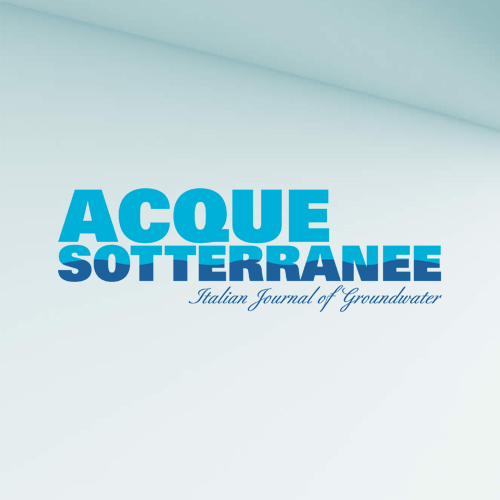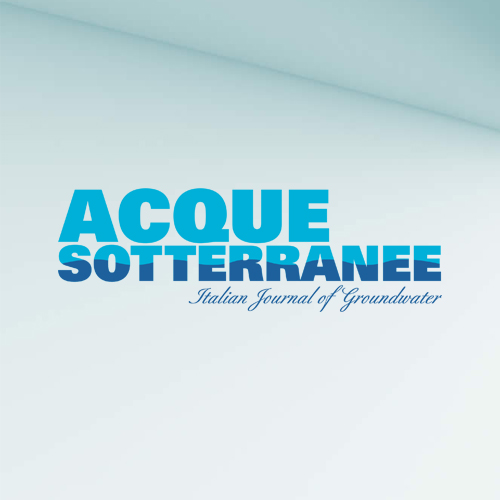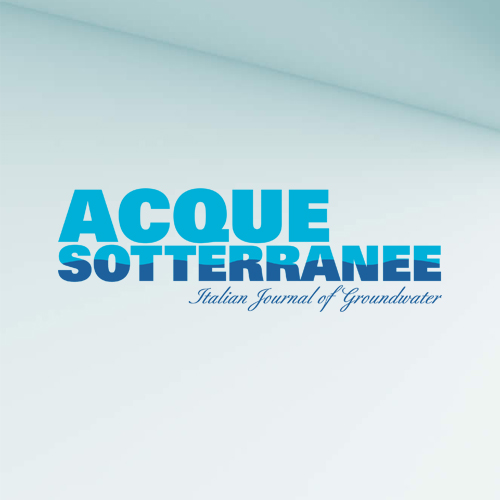Spatio-temporal variability of groundwater hydrochemical features in different hydrogeological settings in Piedmont and Campania regions (Italy), a comparative study
Accepted: 19 March 2024
SUPPLEMENTARY MATERIALS: 106
All claims expressed in this article are solely those of the authors and do not necessarily represent those of their affiliated organizations, or those of the publisher, the editors and the reviewers. Any product that may be evaluated in this article or claim that may be made by its manufacturer is not guaranteed or endorsed by the publisher.
Authors
The spatio-temporal evolution of groundwater chemistry has seen an increase in interest over the last decade at a global level. Identifying and discerning the sources of the natural and anthropogenic compounds and the actual hydrochemical processes, as well as their evolution, is essential to support a sustainable planning for managing and protecting groundwater resources at the present time and in the future. The main objective of this study is the comparison of two study areas in Italy (Piedmont and Campania Regions), different in their geographical and geological contexts and climate conditions, to highlight the similarities and differences in the hydrogeochemical behavior in space and time. Three main ions were considered (NO3 –, SO4 2–, Na+) and analyzed to identify the sources and hydrochemical processes responsible for their spatial distribution in the 2015-2020 period and evaluate the existence and the potential causes of trends in their concentration for the 2000-2020 period. Results highlight specific factors and processes distinguishing the spatial distribution and temporal variability of ion concentrations in Piedmont and Campania study areas. These processes are mainly related to the geological and geographical features of the study areas. In both areas, a significant influence of anthropogenic pressures emerges for both spatial and temporal evolutions, with remarkably increasing trends in NO3 – concentrations. In conclusion, some factors and processes emerge as site-specific, mainly related to the geological aspects and natural hydrochemical processes, whereas others are in common (i.e., anthropogenic impacts); thus, reinforcing the advantage of making comparative studies.
How to Cite

This work is licensed under a Creative Commons Attribution-NonCommercial 4.0 International License.
PAGEPress has chosen to apply the Creative Commons Attribution NonCommercial 4.0 International License (CC BY-NC 4.0) to all manuscripts to be published.
Similar Articles
- Imane Dib, Abdelhamid Khedidja, Wahid Chettah, Multivariate statistical analysis of the alluvial aquifer of Tadjenanet-Chelghoum Laid (Eastern Algeria) , Acque Sotterranee - Italian Journal of Groundwater: Vol. 12 No. 2 (2023)
- Luca Vettorello, Andrea Sottani, Using water level and temperature time series to improve hydrogeological parameterization in a complex alluvial system , Acque Sotterranee - Italian Journal of Groundwater: Vol. 8 No. 4 (2019)
- Abdelhamid Khedidja, Tarek Drias, Azzeddine Reghais, Assessment of groundwater vulnerability to pollution using DRASTIC and the SI methods: case of the alluvial aquifer in Tadjenanet-Chelghoum laid (East Algeria) , Acque Sotterranee - Italian Journal of Groundwater: Vol. 12 No. 2 (2023)
- Hanane Merouchi, Abdelkader Bouderbala, Yamina Elmeddahi, Mapping natural groundwater potential recharge zones using GIS-AHP in the Upper Cheliff alluvial aquifer, Algeria , Acque Sotterranee - Italian Journal of Groundwater: Vol. 13 No. 1 (2024)
- Al Mamun, Evaluating groundwater residence time in arid aquifers: a crucial metric for monitoring sustainable water management , Acque Sotterranee - Italian Journal of Groundwater: Vol. 13 No. 4 (2024)
- Maria Clementina Caputo, Lorenzo De Carlo, Antonietta Celeste Turturro, Manuel Sapiano, Julian Mamo, Oriana Balzan, Luke Galea, Michael Schembri, Hydraulic characterization of Pwales aquifer in Malta Island preparatory for planning managed aquifer recharge (MAR) pilot plant , Acque Sotterranee - Italian Journal of Groundwater: Vol. 13 No. 1 (2024)
- Riccardo Balsotti, Maria Governa, Evaluation of groundwater monitoring according to 2000/60/EC and 2006/118/EC directives in Piedmont , Acque Sotterranee - Italian Journal of Groundwater: Vol. 2 No. 3 (2013)
- Andrea Chahoud, Luca Gelati, Addolorata Palumbo, Giuseppe Patrizi, Immacolata Pellegrino, Giacomo Zaccanti, Groundwater flow model management and case studies in Emilia-Romagna (Italy) , Acque Sotterranee - Italian Journal of Groundwater: Vol. 2 No. 1 (2013)
- Marco Rotiroti, Letizia Fumagalli, Tullia Bonomi, How to manage potential groundwater contaminations by As, Fe and Mn in lower Po Plain: a proposal from the case study of Cremona , Acque Sotterranee - Italian Journal of Groundwater: Vol. 3 No. 2 (2014)
- Ezio Crestaz, Michele Pellegrini, Peter Schätzl, Tight-coupling of groundwater flow and transport modelling engines with spatial databases and GIS technology: a new approach integrating Feflow and ArcGIS , Acque Sotterranee - Italian Journal of Groundwater: Vol. 1 No. 2 (2012)
<< < 3 4 5 6 7 8 9 10 11 12 > >>
You may also start an advanced similarity search for this article.


 https://doi.org/10.7343/as-2024-748
https://doi.org/10.7343/as-2024-748










